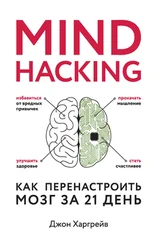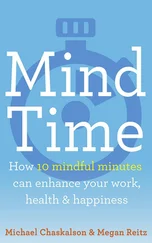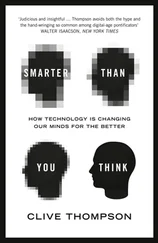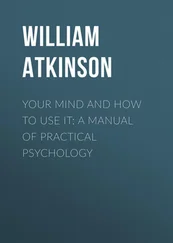Moreover, their two inventing styles were fundamentally different: Edison, who claimed that “genius is one percent inspiration, ninety-nine percent perspiration,” conducted thousands of experiments, meticulously writing down the results of each. Tesla, gifted with the ability to see strikingly vivid mental pictures, worked through problems in his mind, writing down plans only when he had a finished product.
When Edison died in 1931, the New York Times ran an extensive retrospective of his life, with tributes from some of the greatest luminaries of the day. The only wet blanket was Tesla, still not letting it go:
He had no hobby, cared for no sort of amusement of any kind and lived in utter disregard of the most elementary rules of hygiene.
He then wrote these telling words:
His method was inefficient in the extreme, for an immense ground had to be covered to get anything at all, unless blind chance intervened. At first, I was almost a sorry witness of his doings, knowing that just a little theory and calculation would have saved him 90 percent of the labor. 9
For Tesla, the key was running mental simulations: a detailed picture of exactly what you wanted to achieve, working through all the problems, roadblocks, and obstacles in your mind. For Edison, the key was writing it down:doing the experiments one at a time, working through the problems in real-world conditions.
As we’ve seen, there’s a wealth of research to support Edison’s approach. But new studies show that Tesla’s method can work for us as well. I propose a hybrid approach, a final reconciliation between these two great minds. In addition to developing Edison’s habit of writing it down, you can also increase your Tesla-like powers of mental simulation. Here are three easy methods.
Method #1: Shall We Play a Game?
In the classic 1983 geek movie WarGames , a teenage hacker (played by Matthew Broderick) breaks into a high-level military computer that is programmed to run wartime simulations. Thinking it’s a game, the hacker accidentally sets off a countdown to total nuclear annihilation of Russia. In the climactic scene, the entire Department of Defense watches breathlessly as the computer runs countless simulations of World War III, all resulting in mass destruction of the planet.
After a dramatic pause, the computer concludes:
> A strange game. The only way to win is not to play.
A simulationis the imagining of a process or system over time. A flight simulator is a virtual environment where pilots can be trained to respond to emergency situations. A simulation game like SimCity lets you develop a virtual world and watch how it evolves. There are mathematical simulations, financial simulations, and weather simulations. But most important, there are mental simulations.
A mental simulation is simply imagining how something will play out . We do this all the time, from Here’s how this conversation will probably go to How much money will I have when I retire? Let’s define “simulation” as different from “imagination”: whereas we can use imagination to picture the final goal , we use simulation to picture how we’ll get there .
Like imagination, mental simulation is difficult for most of us: trying to picture the road to success is dark and hazy, and the mind keeps getting distracted. It’s hard work. The good news is, just as you can develop the skill of imagination, you can also develop the skill of mental simulation.
At least ten research studies have shown that when people are asked to imagine a future scenario (such as your positive loops), then asked to rate the likelihood of attaining that scenario, they believe it’s more likely to happen if they have spent time doing mental simulations. 10In a fantastic UCLA study by Lien Pham and Shelley Taylor, they explain why this is so: mental simulations allow us to realistically plan how we get from Point A to Point B. 11
In the study, they divided a class of psychology students into three groups. In preparation for an upcoming midterm exam, the researchers asked one group of students to simply imagine themselves getting an A: seeing their test score, feeling the satisfaction of a good grade. They asked a second group to run a mental simulation of getting an A: where and when they would study, how they would handle the temptation to procrastinate, taking the exam itself, then the final test score and rush of good feeling. A third group acted as a control, simply monitoring their study habits each day.
The first group of students, who mentally pictured a good grade for five minutes each day, scored about the same as the control group. The second group, who mentally simulated the process of getting to a good grade for five minutes a day, scored eight points higher: a full letter grade! The researchers concluded that, by itself, “visualizing success” decreases our motivation to actually do the work that leads to success . Students who ran mental simulations, on the other hand, showed better planning skills and less anxiety at test time. (Put that way, the findings seem like common sense!)
The takeaway is that if your positive loop is to become an award-winning playwright, you don’t just see your name on a Broadway marquee. Instead, you picture the act of writing a script, finding financial backers, working with the cast and crew in rehearsals, solving production problems, and doing interviews and publicity, with your name on the marquee a result of the mental simulation you’ve just run.
If you are trying to get free from addiction, you can think through the process of asking for help, going to twelve-step meetings, building a network of sober friends, all while you get stronger and happier. You can simulate situations where you are likely to run into problems: parties, or family reunions, or New Year’s Eve, and how you successfully navigate those temptations.
If your goal is to find a cure for cancer, you can run a mental simulation—a mind movie—of going through years of training and education, countless hours of research, making critical partnerships and collaborations, making the crucial insights and discoveries, then the clinical trials and, finally, success. You can see your name in Wikipedia, but only as the result of the simulation.
Here’s how Jack Nicklaus, widely regarded as the greatest professional golfer of all time, described his approach:
Before every shot I go to the movies inside my head. Here is what I see. First, I see the ball where I want it to finish, nice and white and sitting up high on the bright green grass. Then, I see the ball going there; its path and trajectory and even its behavior on landing. The next scene shows me making the kind of swing that will turn the previous image into reality. These home movies are a key to my concentration and to my positive approach to every shot. 12
Nicklaus used a “reverse simulation,” starting with the end goal and working backward to the present moment. Either method is fine: you can tell the story forward or backward. The important thing is that you tell the story .
This is important, because there will be a story. If you’re trying to become a millionaire, a Brink’s truck is probably not going to back up to your cellar door and unload cash and gold bullion (although that would be an amazing story). It will happen in incremental steps—and by mentally rehearsing, or simulating, the story, you can more clearly see the steps you need to take next.
Will your future play out exactly according to your simulation? We can say with almost total certainty that it will not. Unexpected challenges will present themselves, obstacles you never could have foreseen will block your way. But you will be better equipped to deal with an unpredictable future, because by developing the skill of mental simulation, you can run new simulations in real time, taking the new situation as a starting point.
Читать дальше
![Джон Харгрейв Mind Hacking [How to Change Your Mind for Good in 21 Days] обложка книги](/books/404192/dzhon-hargrejv-mind-hacking-how-to-change-your-min-cover.webp)











